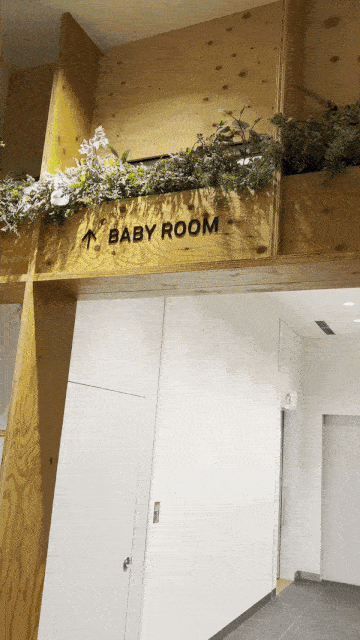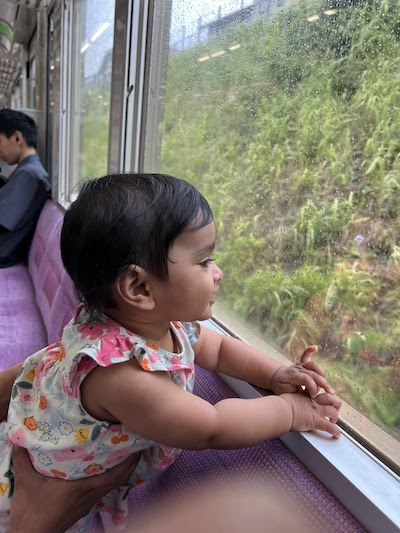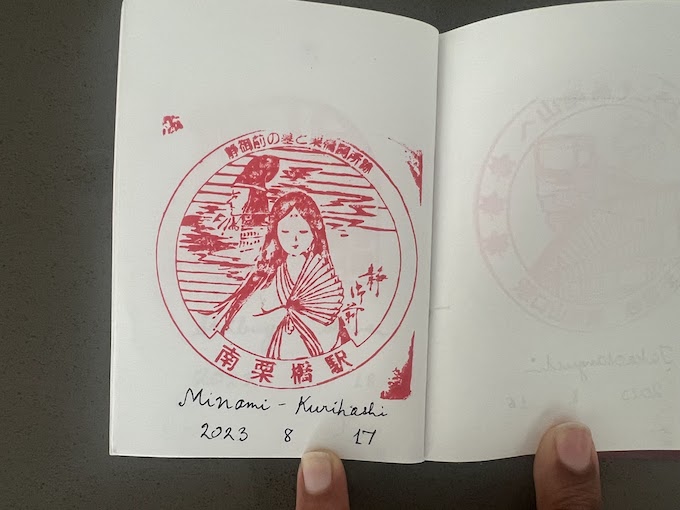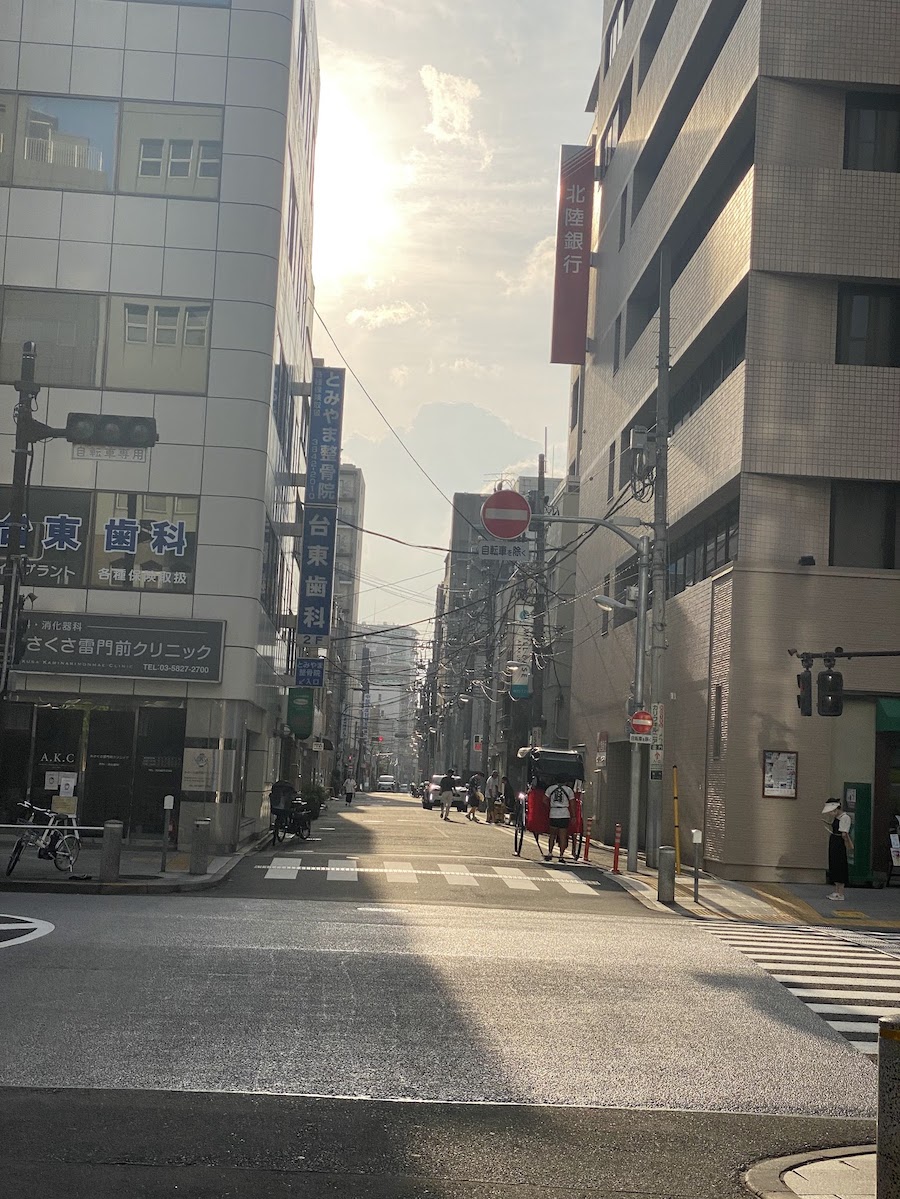Visiting Japan from the US for the first time felt similar to visiting the US from India — like coming to a more advanced place. Significantly better public amenities and a focus on everyday convenience meant that the quality of life felt significantly better. Here are some cool things I saw there.
Baby Infrastructure
 Traveling with a young baby meant frequent breaks to feed and change diapers. I
was blown away by the abundance of well-stocked baby rooms. The nursing rooms
had air conditioning, a bottle warmer, a seat to put the baby in, a diaper pail,
changing tables, and a comfy lounge chair for breastfeeding. In Tokyo, we
generally found one at no more than a 10-minute walk from wherever we were, and
the Mamapapamap App
made them super easy to find too.
Traveling with a young baby meant frequent breaks to feed and change diapers. I
was blown away by the abundance of well-stocked baby rooms. The nursing rooms
had air conditioning, a bottle warmer, a seat to put the baby in, a diaper pail,
changing tables, and a comfy lounge chair for breastfeeding. In Tokyo, we
generally found one at no more than a 10-minute walk from wherever we were, and
the Mamapapamap App
made them super easy to find too.
Trains
 Tokyo is known to have the best urban rail network in the world, and it was
a pleasure to experience it in person. The trains were frequent and comfortable,
the stations were clean and modern, the wayfinding was intuitive. Here are some
neat things I saw:
Tokyo is known to have the best urban rail network in the world, and it was
a pleasure to experience it in person. The trains were frequent and comfortable,
the stations were clean and modern, the wayfinding was intuitive. Here are some
neat things I saw:
- Each station has a unique jingle that gets played after the station name is announced. Listening to these made the experience of taking a train just a little more delightful
- I had a lot of fun collecting eki-stamps — colllectible rubber stamps unique
to each station. Another thing that added delight to train travel

- We forgot our diaper bag on a Tokyo Metro train. In any other city, this would’ve been bye-bye bag, but not in Tokyo. The person at Nagatachō station called and tried to locate the bag, but the train had already through-run onto a Tobu line. I called Tobu, and they located the bag, with all contents still there. I had to go to Minami Kurihashi at the end of the line to get it, but was rewarded with the prettiest Eki stamp
- Fare gates are default open instead of default closed. If you tap your fare card, they stay open. If you don’t, or if you have insufficient balance, they close on you preventing you from getting out. This helps increase throughput, as well as presumably decrease the amount of maintenance needed on moving parts.
- If you have insufficient funds when you tap while exiting a fare gate, and need to refill the balance, the machine remembers your tap and gives you an option to refill with just the right amount, leaving your balance zero after this trip
Order and Calm
Despite being constantly surrounded by people, Tokyo always felt calm and orderly. Tokyo station and the streets of Shibuya were some of the most crowded places I’ve been to, and yet they never felt overwhelming. People walked on the left side, car drivers respected pedestrian right of way, sidewalks were wide. The hike up Mount Takao felt peaceful despite being pretty busy. I give credit to great infrastructure, as well as a culture of being respectful of others.
Street Design
 The typical neighborhood street in Tokyo was significantly more compact than the
ones in San Francisco. No street parking, no sidewalks, no trees, no bike lanes.
Pedestrians, bicyclists, and cars shared the same space. Walking actually felt a
lot more pleasant than you’d think because cars were few and far between (most
are on arterials and highways), and they were going at a pretty slow speed
thanks to the urban form. The main positive for walking is that with
buildings being closer to each other, everything is more compact, and you
typically need to walk less to get to your destination, even compared to a dense
American city like San Francisco.
The typical neighborhood street in Tokyo was significantly more compact than the
ones in San Francisco. No street parking, no sidewalks, no trees, no bike lanes.
Pedestrians, bicyclists, and cars shared the same space. Walking actually felt a
lot more pleasant than you’d think because cars were few and far between (most
are on arterials and highways), and they were going at a pretty slow speed
thanks to the urban form. The main positive for walking is that with
buildings being closer to each other, everything is more compact, and you
typically need to walk less to get to your destination, even compared to a dense
American city like San Francisco.
Smoking
In America, smoking indoors is generally disallowed, but smoking outdoors is okay. In Japan, it is the opposite — I rarely came across people smoking outdoors but routinely found them smoking inside. Weird? Not really. There are designated smoking areas with fans and vents to make sure nobody who didn’t willingly agree to be exposed to cigarette smoke gets exposed to cigarette smoke, including people outdoors going about their day.